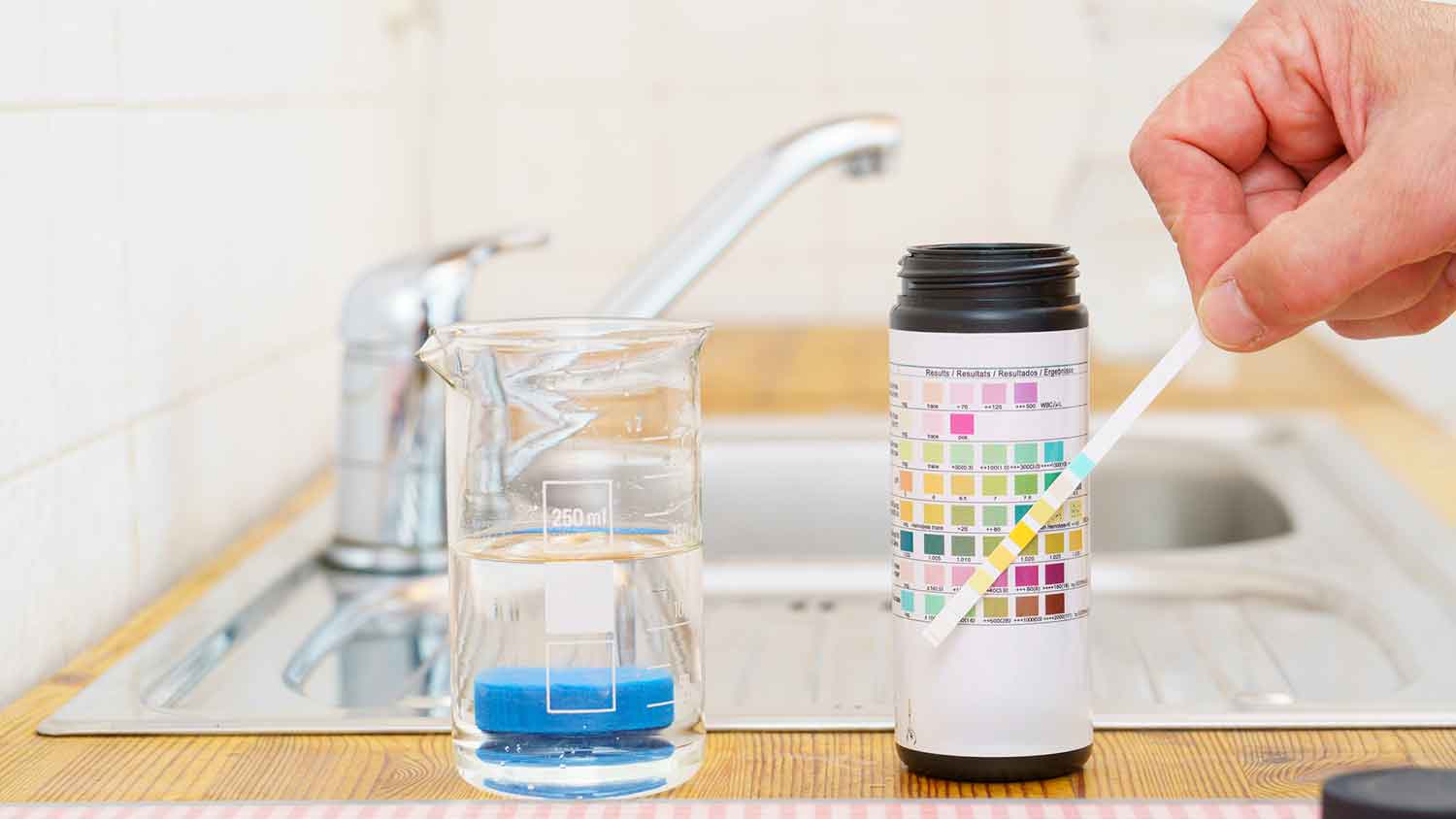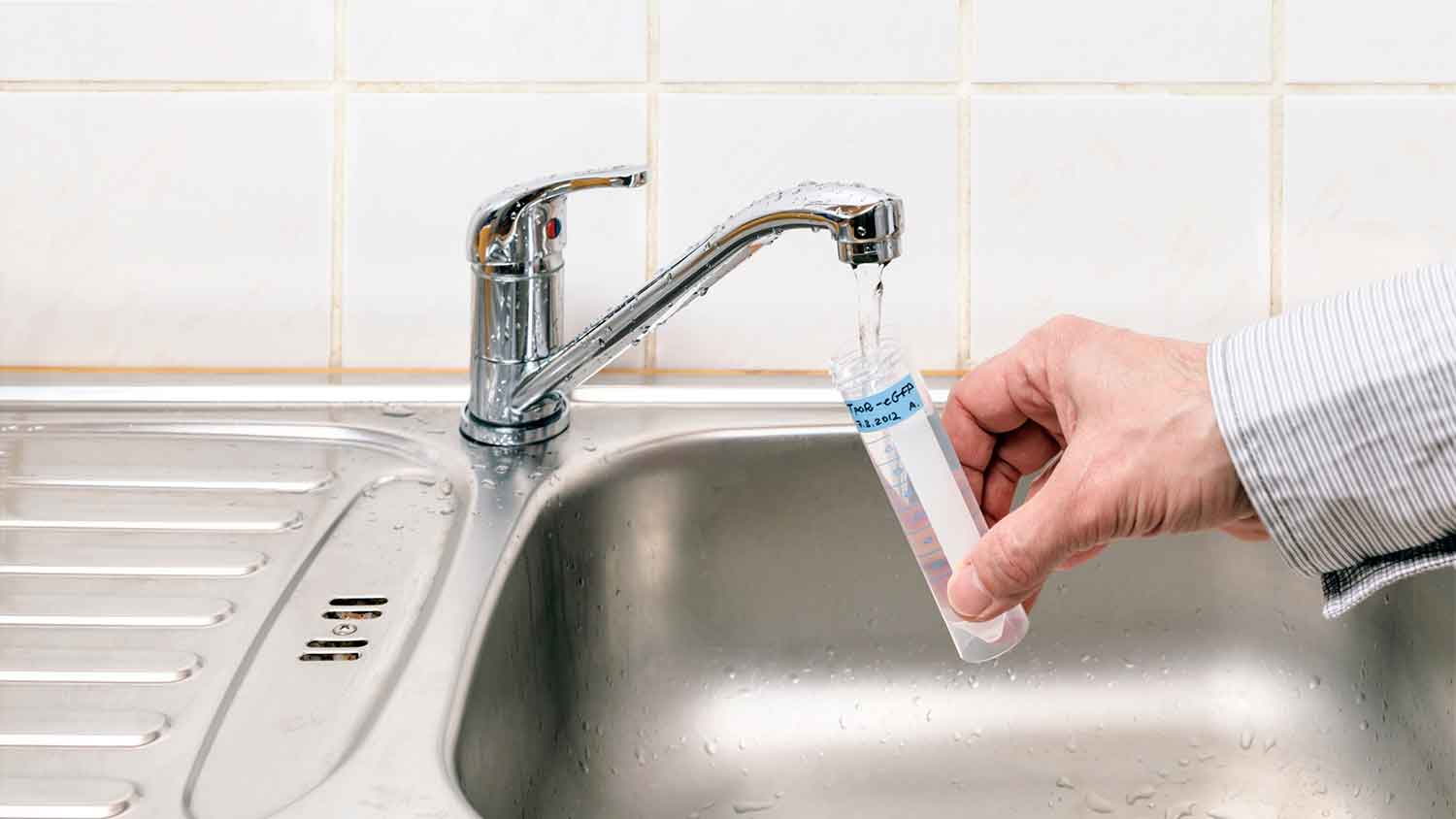
How much a water softener costs depends on your home’s size, and the system’s type and capacity. Our expert guide explores all the price factors.
When in doubt, test it out


It can be easy to tell if you have very hard water based on limescale buildup on your faucets or the feeling of dry skin and hair after a shower. But sometimes, hard water isn’t noticeable until it’s causing problems with your plumbing. To help determine whether you may need to seek a solution, like installing a water softener, learn how to test water hardness using four different methods in this guide.
Hard water has magnesium and calcium levels above 120 parts per million (PPM) or 7 grains per gallon (GPG). About 86% of U.S. households have hard water, and this is simply a matter of the water supply. If your local waterways have higher mineral content, it can cause hard water in your home.
Unfortunately, it’s expensive for municipalities to treat water hardness at a large scale. If you live in an area with naturally hard water and your city doesn’t have the infrastructure to soften water for residents, this means that your home will have hard water—that is, unless you decide to install your own treatment system.
A few signs that you're dealing with hard water in your home include excess soapy residue in your bath, skin irritation with no obvious cause, a decrease in hair health, and appliance issues.
The cost to test water hardness varies widely. You may be able to book a water test through your local health or water department for free, or you can find testing kits for $10 to $400. You can also work with a lab, which will test a sample of water you send for $50 to $500.
There are many ways to tell if you have hard water before you actually test it. Hard water often shows itself by affecting your appliances, faucets, and even your skin. Some signs of hard water include:
Dry skin
Brittle hair
Limescale buildup around faucets
White residue on clean dishes
More time spent trying to remove water spots from glasses
Film and soap scum in sinks and bathtubs
Faded laundry
Frequent appliance and plumbing issues
Learning how to test water hardness is an easy DIY project for any homeowner to tackle, often with just a few minutes of your time. From a home test using liquid soap to lab samples, here are four ways to test if you have hard water.
When it comes to city water versus well water, city water is regularly tested by municipal officials or the water supplier. You should be able to access water quality reports, which will tell you whether your area has hard water, through your utility provider’s website or with a quick phone call. You can also use the U.S. Environmental Protection Agency’s (EPA) Consumer Confidence Report (CCR) search engine to find your CCR.
Just keep in mind that water quality can change as it flows from the city line through your plumbing and to your tap, so these water quality reports won’t be 100% precise about the exact water quality in your home. You may want to explore other testing methods to get a better idea of your home’s water quality specifically.
It might not be high-tech, but a DIY water test may do the job if all you’re looking for is proof of hard water. An at-home water test with supplies you have lying around the kitchen can help you avoid investing time and money into picking up an official test kit.
Put a few drops of pure liquid soap into a sealable container.
Fill the container 1/3 of the way with water.
Seal the container.
Shake the container vigorously.
Wait 20 seconds for everything to settle.
If there are very few bubbles or a cloudy appearance, you likely have hard water. If there are tons of suds and mostly clear water below the bubbles, you likely have soft water.

You can order an at-home test kit online or get one at your local home improvement store. All you have to do is dip a treated testing strip into still water. The testing strip will change in color depending on what minerals are present. From there, you can compare the color of the testing strip to a key in the kit, which will tell you the mineral content in your water.
Follow the instructions included with the at-home test kit you purchase. If the water has more than 120 PPM or 7 GPG, you have hard water.

You can leave water testing to a professional lab if you want a more advanced water quality test. You can either buy a kit, which will include instructions for collecting and sending a sample of your water to a lab, or reach out to a third-party lab to pay for this service and receive instructions.
The lab will test your water to determine its hardness level. This service also includes testing for alkalinity, the pH balance of your water, and the presence of other minerals and chemicals. This type of testing is ideal if you suspect your water may be contaminated. Similarly, if you have well water, you should have the water quality tested at a lab at least once per year.
If you have hard water, the simplest solution is to call a local water softener installation company to install a softener in your home. A water softener uses sodium or potassium to swap places with the hard minerals in your water to make it soft. You can also explore different types of water filters that can reduce the minerals of hard water and remove other contaminants, like bacteria or heavy metals.
Another option is to install a water conditioner. Rather than removing hard minerals, a water conditioner changes the chemical structure of minerals in the water. The crystallized mineral structure makes it harder, but not impossible, for the minerals to build up in pipes, faucets, and appliances.
Finally, until you have a long-term solution, clean stubborn scale buildup and hard water stains with a combo of vinegar and warm water, baking soda, or lemon juice as soon as you notice it getting bad.
Testing for water hardness is an easy and cost-effective project for even novice DIYers. Testing kits will walk you step-by-step through the process, whether you use a testing strip and color chart or send a water sample off to a lab.
Because most households have hard water, it can be quite a nuisance to your water-using appliances. But there are times when hard water may be more of a concern than just a few stains on your glassware. If you notice signs of a more serious issue, it might be time to call in a pro to take a look at your tap water ASAP. Strange colors, odors, and tastes could be a sign that it’s time to replace your old pipes.
Allie Ogletree contributed to this piece.
From average costs to expert advice, get all the answers you need to get your job done.

How much a water softener costs depends on your home’s size, and the system’s type and capacity. Our expert guide explores all the price factors.

Water softener repair costs can add up, but they’re almost always worthwhile. Use this guide to see what your project is going to cost before you get started.

Discover how much well water treatment systems cost, including installation, maintenance, and tips to save. Get expert insights to plan your water system project.

Having an issue with your water softener? Learn the parts of a water softener and how they work together to treat hard water with this guide.

While not all symptoms of too much chlorine in water are cause for concern, there are times when you should call a pro. Get the details in this article.

What is a water filter and why do you need one? Here’s how they work and how to choose the best water filtration system for your home.